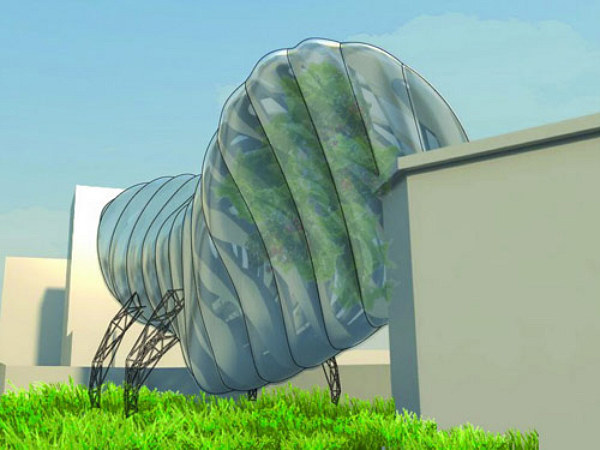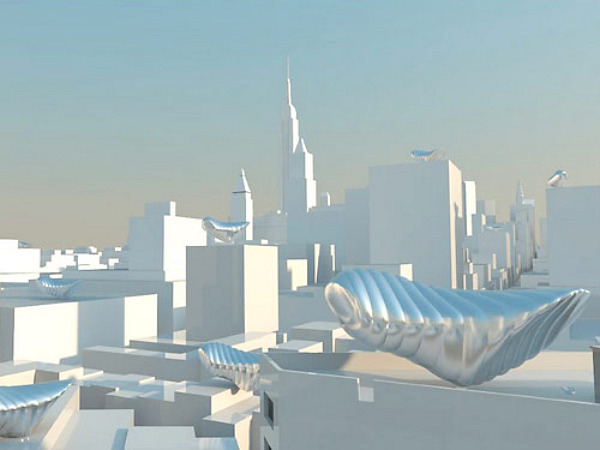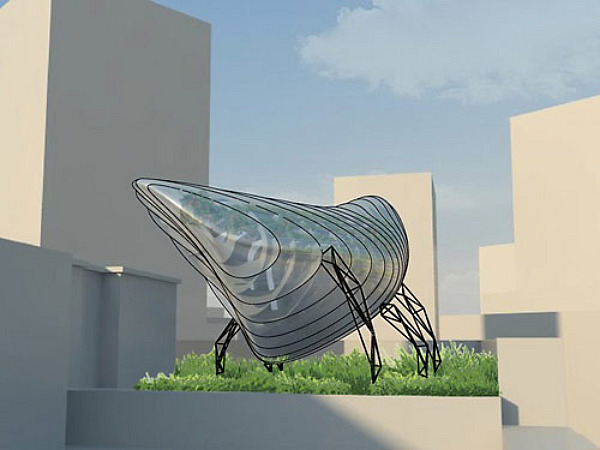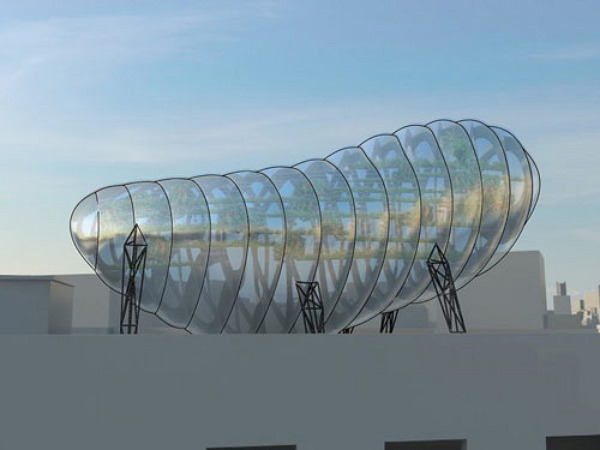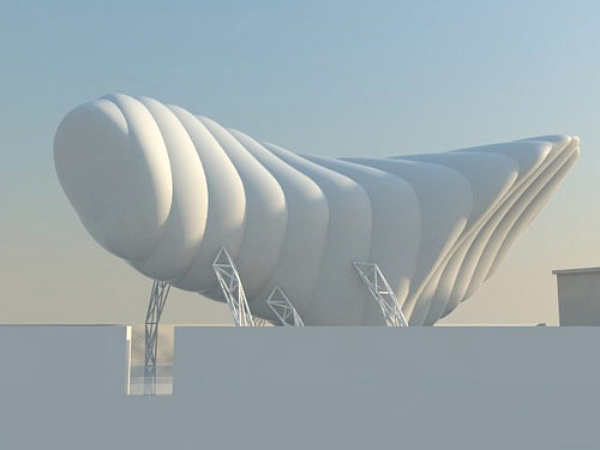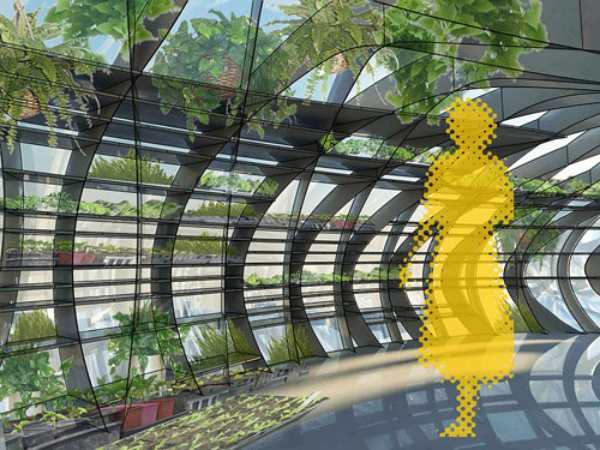A lot of recent speculation into the future of agriculture and its role in urban environments includes the construction of large vertical farms – eco skyscrapers devoted completely to growing food. But what if there was an easier solution rather than constructing whole towers devoted to the endeavor? One idea is to craft growing pods or greenhouses designed for urban rooftops that feed off the building’s waste and excess. These growing pods would involve significantly less investment and infrastructure and easily tap into existing systems.
Natalie Jeremijenko, an aerospace engineer and environmental health professor at New York University, in partnership with Jeremy Edmiston, principal at SYSTEMarchitects, have come up with an interesting concept that could easily transform the rooftops of the urban fabric into growing machines. The rooftop greenhouses, called the Urban Space Structure, pack in the plants and can support growth all year long. Rib-like supports create the main structure, which is wrapped in ETFE (ethylene tetrafluoroethylene), which is a translucent polymer that is both strong and recyclable and seen in use on many structures recently – most notably the Water Cube for the Beijing Olympics last year.
Normally for rooftops to be able to support increased weight for a structure, the building’s structure would need to be updated. To avoid the need to update the building, the greenhouse rests on stilts, which are positioned in a way to stabilize the pod and distribute its weight to the building’s supports. This stilt system would minimize the need to shore up a buildings rooftop to support a large weight. Another way weight is reduced is to grow plants hydroponically, which eliminates heavy soil.
The rooftop gardens work in tandem with the building below and are connected via an umbilical cord of sorts. Stale air and carbon dioxide could be ventilated into the garden, which would create fresh oxygen and provide clean air that would be sent back into the building via ventilation system. Waste heat from the building’s HVAC system would help the plants grow during the cooler months and waste water from sinks, showers and fountains could be reused by the plants.
While vertical gardens may certainly have their place in the city of the future, a plot of land and a large building with a lot of advanced technology would be required. Urban Space Structure has the potential to be easily built and installed on a rooftop at a much lower start up cost than a large farm.

